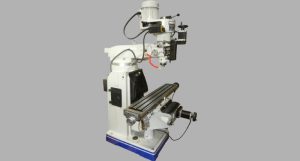From the moment we began working with CNC lathes, we were destined to become the backbone of manufacturing. It’s fair to say that since humans learned to control machines with code, we’ve sparked a technological revolution. Going back to when engineers first created G-code, they worked tirelessly in factory workshops, perhaps unaware that they were laying the foundation for industrial automation. With programming tools in hand, they stood next to massive machines, issuing commands that drove today’s technological advancements. As CNC technology spread, metalworking took on a turbocharged transformation, shifting from a traditional craft to a cutting-edge industry. Now, CNC lathes have become essential in our daily lives, providing crucial support for cars, airplanes, buildings, and more. All of this is thanks to the seamless programming languages—from the precision of G-code to the complexity of Mazatrol—that make our manufacturing processes faster and more precise, building the modern world we rely on.
CNC lathes primarily run on specialized programming languages, including G-code, M-code, Heidenhain conversational programming, and Mazatrol, with G-code being the most common. G-code is a universal programming language that controls the movement and operations of CNC machines. It uses specific commands to set tool paths, speed, feed rate, and other parameters, enabling high-precision machining.
In this article, let’s explore the programming languages of CNC lathes and uncover what makes them so essential.

The Role of Programming in CNC Lathes
Programming languages hold essential importance for CNC lathes. With these languages, engineers can direct machines to perform a series of complex tasks, from setting spindle speed to defining precise cutting paths, all through simple code. These languages make it possible for lathes to operate automatically while ensuring a high level of precision and consistency. In many ways, CNC programming gives manufacturers innovative tools, making complex machining tasks more efficient and controllable.
G-Code: The Foundation of CNC Programming
What is G-Code?
G-Code is the most widely used programming language for CNC machines and forms the foundation of CNC control. Each G-Code command includes specific instructions that define the machine’s actions, such as movement, speed, and position. G-Code originated back in the 1950s and eventually became the standard language in the CNC machining industry.
Why is G-Code so important?
G-Code controls every action of a CNC lathe through a series of simple commands. For example, G00 represents a rapid positioning command, G01 is for linear interpolation, while G02 and G03 are for clockwise and counterclockwise circular interpolation, respectively. Operators can select the appropriate commands based on their machining needs, combining them to achieve a variety of cutting effects.
Example:
G21 ; Set units to millimeters
G90 ; Absolute coordinate mode
G00 X50 Y20 ; Move rapidly to position X50, Y20
G01 Z-10 F100 ; Linearly interpolate to Z-10 at a speed of 100 mm/minOther CNC Programming Languages
Aside from G-Code, several other common programming languages exist for CNC machines:
M-Code
M-Code controls auxiliary functions on the lathe, such as coolant and spindle start/stop. Engineers often use M-Code alongside G-Code to complete the CNC operation. For example, M03 commands the spindle to rotate forward, while M05 stops the spindle. M-Code provides programmers with control over non-cutting functions, making the CNC program more comprehensive.
Heidenhain Conversational Programming
Heidenhain conversational programming offers a more intuitive language, primarily used on high-precision CNC machines. This language uses a conversational approach, allowing operators to input the necessary machining parameters, and automatically generates the required code. Widely adopted in the European market, Heidenhain is ideal for complex 3D machining and reduces programming difficulty.
Mazatrol
Mazatrol, the specialized language for Mazak CNC machines, is known for its user-friendly conversational programming. By entering simple parameters, Mazatrol quickly helps users generate machining programs, suitable for various processing environments. This language greatly simplifies setup in complex machining tasks, saving operators time and effort.
The Impact of Different Programming Languages on CNC Operations
Each CNC programming language offers unique advantages in specific applications. G-Code works well for general machining tasks and is widely used due to its versatility. However, Mazatrol and Heidenhain conversational programming can be more efficient in certain scenarios. For instance, Mazatrol is ideal for quick setup in small-batch machining, while Heidenhain, known for its high precision, serves well in aerospace and other precision-focused industries. These languages differ in terms of precision, setup time, and operational complexity, making each suited to particular machining needs.
Programming Software for CNC Lathes
In CNC programming, CAD/CAM software like Mastercam, Fusion 360, and SolidCAM plays an essential role. These tools allow designers to convert complex 3D models into machine-readable code for CNC lathes. With intuitive interfaces and a wealth of automation features, these programs make the programming process more accessible and efficient. For example:
- Mastercam: Ideal for turning, milling, and mill-turn applications, with full support for G-Code output.
- Fusion 360: Integrates design, manufacturing, and engineering processes, making it particularly suited for rapid prototyping.
- SolidCAM: Supports multi-axis machining, widely used in high-end manufacturing industries.
How to Learn CNC Programming
Getting Started
Beginners can start with G-Code, as it’s the most commonly used programming language across CNC machines. Many online courses and tutorials provide foundational G-Code lessons, allowing you to gradually master basic commands step-by-step.
Recommended Resources
- Online Courses: Platforms like Coursera and Udemy offer comprehensive CNC programming courses.
- Books: The CNC Programming Handbook is a classic beginner-friendly book.
- CNC Programming Simulators: Tools like the G Code Simulator let you test G-Code in a virtual environment.
Practical Tips
- Learn Basic Commands: Start with commands like
G00for rapid positioning andG01for linear interpolation. - Understand Common Parameters: Familiarize yourself with parameters such as spindle speed and feed rate.
- Begin with Simple Programs: Write basic contouring programs to get comfortable with CNC programming logic.
The Future of CNC Programming
With rapid advancements in artificial intelligence and machine learning, CNC programming languages continue to evolve. Future CNC programming will likely become smarter and even capable of optimizing programs automatically to enhance machining efficiency and quality. For instance, some high-end CNC machines already utilize AI-based algorithms to adjust feed rates and cutting paths automatically during operations. The future of CNC programming languages promises even more possibilities for manufacturing, pushing processes towards greater intelligence and automation.
Conclusion
CNC programming languages are a powerful driving force behind precision manufacturing. From G-Code to Mazatrol, each language offers unique advantages and serves specific applications. Whether you’re a beginner or an experienced CNC engineer, CNC programming is a skill worth exploring. Mastering these languages will put you at the forefront of technological advancements in manufacturing.











